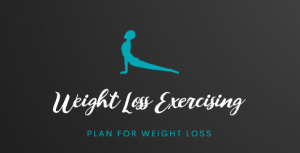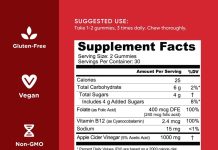Losing weight is a goal that many of us strive for, but it’s important to approach it in a healthy way. In this article, we will explore the question that often plagues our minds: “How much weight can I healthily lose in a month?” We will uncover the key factors that determine a safe and achievable weight loss goal, while also providing expert advice on how to maintain a balanced and sustainable approach to shedding those extra pounds. So, if you’re ready to embark on a weight loss journey, buckle up and join us as we navigate through the realm of healthy weight loss.
Review contents
Factors That Affect Healthy Weight Loss
Caloric Intake
One of the key factors that influence healthy weight loss is caloric intake. Consuming fewer calories than our body needs creates a caloric deficit, leading to weight loss. However, it is important to strike a balance and ensure we are still meeting our nutritional needs. Drastically reducing calories can have negative effects on our metabolism and overall health.
Physical Activity Level
Our level of physical activity also plays a significant role in healthy weight loss. Regular exercise helps increase our caloric expenditure and aids in burning excess fat. Engaging in a combination of cardio exercises, such as running or swimming, and strength training activities like weightlifting, can help maximize our weight loss efforts. Finding activities we enjoy can make exercise more sustainable and enjoyable.
Basal Metabolic Rate
Basal metabolic rate (BMR) refers to the number of calories our body needs to perform basic bodily functions while at rest. Factors such as age, gender, weight, and body composition influence our BMR. By understanding our unique BMR, we can determine our daily caloric needs and adjust our intake accordingly to support healthy weight loss.
Body Composition
Body composition, specifically the ratio of muscle to fat in our body, can impact the rate of weight loss. Muscle tissue is more metabolically active than fat tissue, meaning it burns more calories even at rest. Therefore, individuals with a higher proportion of muscle tend to have a higher basal metabolic rate and may experience faster weight loss. Incorporating strength training exercises into our routine can help build and maintain lean muscle mass.
Genetics
While genetics do play a role in our overall body shape and size, they do not solely determine our ability to lose weight. Our genetic makeup can influence factors such as metabolism and fat distribution, but our lifestyle choices and habits ultimately have a greater impact on our weight loss journey. By adopting a healthy lifestyle, we can optimize our weight loss potential regardless of our genetic predispositions.
Gender
Gender can also influence weight loss due to physiological differences between males and females. On average, men tend to have a higher basal metabolic rate and a greater muscle mass, which can lead to a faster rate of weight loss compared to women. However, it is important to focus on individual progress rather than comparing ourselves to others. Each person’s weight loss journey is unique and should be approached with patience and self-compassion.
Age
As we age, our metabolism naturally slows down, making weight loss more challenging. Additionally, hormonal changes, such as decreased levels of estrogen in women during menopause, can affect body composition and metabolism. Engaging in regular physical activity, maintaining a balanced diet, and incorporating strength training exercises can help counteract the age-related decline in metabolism and support healthy weight loss.
Overall Health
Our overall health plays a crucial role in weight loss. Underlying medical conditions or medications can impact our metabolism and body’s ability to lose weight. It is important to consult with a healthcare professional if we have any concerns or medical conditions that may affect our weight loss journey. Prioritizing our overall health and addressing any underlying health issues is an essential part of a sustainable weight loss plan.
Metabolism
Metabolism refers to the chemical processes that occur within our body to convert the food we eat into energy. While our metabolic rate is influenced by factors such as age, genetics, and body composition, we can also take steps to boost our metabolism naturally. Consuming a balanced diet, engaging in regular physical activity, and ensuring we are adequately hydrated can help optimize our metabolism and support healthy weight loss.
Individual Differences
Each individual is unique, and our bodies may respond differently to various weight loss strategies. It is important to listen to our bodies and make adjustments as needed. Some individuals may see significant progress with certain dietary modifications, while others may find more success with increased physical activity. Experimenting with different approaches and consulting with professionals can help us find the most effective weight loss strategies for our individual needs.
Recommended Rate of Weight Loss
Safe and Sustainable Weight Loss
When it comes to weight loss, it is crucial to prioritize safety and sustainability. Crash diets or rapid weight loss strategies may yield quick results initially, but they are often not sustainable and can have negative impacts on our overall health. Instead, focusing on gradual weight loss over a longer period allows our body to adjust and adapt, increasing the likelihood of maintaining the weight loss in the long term.
1-2 Pounds per Week
A safe and sustainable rate of weight loss is commonly recommended to be around 1-2 pounds per week. This rate ensures that we are primarily losing fat while preserving muscle mass. Losing weight at this pace also helps our body adjust to the changes and gives us time to develop healthy habits that can be maintained in the long term.
Percentage of Body Weight
Another way to determine a healthy rate of weight loss is by considering the percentage of body weight we aim to lose. Losing 5-10% of our total body weight over a period of six months is considered a realistic and achievable goal for most individuals. This percentage provides a tangible target and reduces the risk of losing weight too rapidly.
Rapid Weight Loss Risks
Rapid weight loss, achieved by severely restricting calories or using extreme methods, can put significant stress on our body and have adverse effects on our health. It can lead to muscle loss, nutrient deficiencies, dehydration, and even slowed metabolism. It is important to prioritize our well-being and choose sustainable weight loss methods that support long-term success.
Creating a Caloric Deficit
Understanding Calorie Deficit
To achieve weight loss, we must create a caloric deficit by consuming fewer calories than our body requires to maintain its current weight. A calorie deficit of 500 to 1000 calories per day can result in a weight loss of 1 to 2 pounds per week. However, it is essential to strike a balance and avoid excessively low-calorie diets, as they can be detrimental to our health and make long-term weight maintenance challenging.
Caloric Intake and Weight Loss
Monitoring our daily caloric intake is crucial for successful weight loss. Understanding the number of calories we consume through food and beverages allows us to make informed decisions and adjust our eating habits accordingly. Keeping a food diary or using a mobile app can be helpful in tracking our caloric intake.
Tracking Daily Caloric Intake
To determine our daily caloric intake for weight loss, we can use online calculators or consult with a registered dietitian. These professionals can assess our individual needs and provide guidance on the appropriate caloric deficit to aim for. They can also help us create a balanced meal plan that meets our nutritional requirements while supporting weight loss.
Dietary Modifications
Making dietary modifications is an essential component of creating a caloric deficit. Opting for nutrient-dense foods, such as fruits, vegetables, lean proteins, whole grains, and healthy fats, can help us feel satisfied while consuming fewer calories. It is also important to be mindful of portion sizes and practice mindful eating to prevent overeating.
Exercise and Physical Activity
Engaging in regular physical activity not only increases our caloric expenditure but also offers numerous health benefits. Combining cardiovascular exercises, such as walking, jogging, or cycling, with strength training activities helps burn calories and build lean muscle mass. Incorporating more movement into our daily routine, such as taking the stairs instead of the elevator or going for a walk during lunch breaks, can also contribute to overall calorie expenditure and support weight loss efforts.
Healthy Eating Patterns and Nutrient Balance
Choosing Nutrient-Dense Foods
When it comes to weight loss, focusing on nutrient-dense foods is essential. These foods provide essential vitamins, minerals, and antioxidants while being relatively low in calories. Incorporating fruits, vegetables, whole grains, lean proteins, and healthy fats into our meals provides the nourishment our body needs while supporting weight loss goals.
Protein Requirements
Protein plays a crucial role in weight loss and body composition. It helps preserve lean muscle mass, aids in muscle repair and recovery, and promotes satiety. Including lean sources of protein, such as chicken, fish, tofu, beans, and Greek yogurt, in our meals and snacks can help us feel fuller for longer and support our weight loss journey.
Balancing Macronutrients
A balanced intake of macronutrients (carbohydrates, proteins, and fats) is important for overall health and weight loss. While the optimal distribution may vary based on individual needs and preferences, a general guideline is to aim for a moderate intake of carbohydrates, a sufficient amount of protein, and healthy fats from sources such as avocados, nuts, and olive oil.
Fiber Intake
Fiber is a crucial component of a healthy diet and weight loss plan. It helps regulate digestion, promotes feelings of fullness, and can aid in weight management. Incorporating fiber-rich foods, such as fruits, vegetables, whole grains, legumes, and nuts, into our meals and snacks can support satiety and help us achieve our weight loss goals.
Hydration
Staying adequately hydrated is often overlooked but is essential for overall health and weight loss. Drinking water can help control appetite, boost metabolism, and promote proper digestion. It is recommended to drink at least 8 cups (64 ounces) of water per day, and more if engaging in intense physical activity or in hot climates.
Vitamin and Mineral Needs
When pursuing weight loss, it is important to ensure we are meeting our body’s nutrient requirements. A well-balanced diet that includes a variety of fruits, vegetables, whole grains, lean proteins, and healthy fats can provide essential vitamins and minerals. However, it may be beneficial to consult with a registered dietitian or healthcare professional to address specific nutrient needs or consider supplementation if necessary.
Limiting Added Sugars and Processed Foods
Reducing our intake of added sugars and processed foods is crucial for successful weight loss. These types of foods are often high in calories, low in nutritional value, and can lead to increased cravings and overeating. Opting for whole, unprocessed foods and preparing meals at home allows us to have better control over our ingredients and make healthier choices.
Importance of Physical Activity
Cardiovascular Exercise
Engaging in cardiovascular exercises, such as brisk walking, jogging, swimming, or cycling, is important for weight loss and overall health. These activities increase our heart rate, improve cardiovascular health, and contribute to calorie expenditure. Aim for at least 150 minutes of moderate-intensity aerobic activity or 75 minutes of vigorous-intensity aerobic activity per week, along with strength training exercises.
Strength Training
Incorporating strength training exercises into our routine is vital for weight loss. These exercises help build and maintain lean muscle mass, increase metabolism, and improve body composition. Including exercises such as weightlifting, resistance band workouts, or bodyweight exercises at least twice a week can help maximize our weight loss efforts and promote overall strength and well-being.
Incorporating Physical Activity into Daily Routine
Finding ways to incorporate physical activity into our daily routine is crucial for sustainable weight loss. Simple changes such as taking the stairs instead of the elevator, walking or biking instead of driving short distances, or engaging in active hobbies such as gardening or dancing can increase our overall caloric expenditure and support weight loss goals.
Increasing Non-Exercise Activities
In addition to dedicated exercise sessions, increasing our non-exercise activities can also contribute to weight loss. These activities, also known as Non-Exercise Activity Thermogenesis (NEAT), include everyday movements such as standing, walking, and light housework. Being mindful of our sedentary behaviors and finding opportunities to increase movement throughout the day can make a significant difference in overall calorie expenditure.
Effects of Sleep and Stress on Weight Loss
Sleep Duration and Quality
Getting adequate sleep is crucial for successful weight loss. Lack of sleep can disrupt hormonal balance, leading to increased hunger and cravings, decreased satiety, and reduced energy levels. Aim for 7-9 hours of quality sleep per night to support our weight loss efforts.
Stress Management Strategies
Managing stress is important for overall well-being and can also impact weight loss. During periods of stress, our body releases cortisol, a hormone that can lead to increased appetite and fat storage. Incorporating stress management techniques such as meditation, deep breathing exercises, yoga, or engaging in hobbies that bring joy and relaxation can help mitigate the negative effects of stress on our weight loss journey.
Seeking Professional Guidance
Consulting with a Healthcare Provider
When embarking on a weight loss journey, it is important to consult with a healthcare provider, especially if we have any underlying medical conditions or concerns. They can provide personalized advice, perform necessary tests or assessments, and ensure our weight loss plan aligns with our overall health goals.
Registered Dietitian or Nutritionist
A registered dietitian or nutritionist is a valuable resource when it comes to creating a personalized and effective weight loss plan. They can assess our nutritional needs, help us create a balanced meal plan, and offer guidance on portion control, healthy food choices, and maintaining a healthy relationship with food. Consulting with a professional can increase our chances of achieving long-term success.
Certified Personal Trainer
Working with a certified personal trainer can be beneficial for individuals seeking guidance on exercise strategies, proper form, and motivation. They can tailor a workout routine to our specific goals, whether it be weight loss, muscle building, or overall fitness improvement. A personal trainer can help ensure exercises are performed safely and effectively, maximizing our weight loss potential.
Monitoring Progress and Adjustments
Regular Weigh-Ins
Monitoring our weight regularly can help us track our progress and make necessary adjustments to our weight loss plan. It is important to remember that weight fluctuations are normal and can be influenced by factors such as water retention, muscle gain, or hormonal changes. Avoid becoming fixated solely on the number on the scale and focus on overall progress and how our body feels.
Body Measurements
In addition to weighing ourselves, taking measurements of our body can provide a more comprehensive view of our progress. Measuring areas such as waist circumference, hip circumference, and body fat percentage can reveal changes in body composition and help gauge the effectiveness of our weight loss efforts.
Tracking Food and Exercise
Keeping a food and exercise journal can be a powerful tool for weight loss. Tracking our meals, snacks, and physical activity allows us to identify patterns, make mindful choices, and identify areas for improvement. There are various mobile apps and online tools available that make tracking food and exercise more convenient.
Modifying Approaches Based on Results
Weight loss is a dynamic process, and it may be necessary to make adjustments to our approach along the way. If we reach a weight loss plateau or find that our initial plan is no longer yielding results, consulting with a healthcare professional or registered dietitian can help us identify potential areas for modification. Adjusting our caloric intake or exercise routine can help kickstart progress and overcome plateaus.
Avoiding Unhealthy Weight Loss Methods
Extreme Caloric Restrictions
Severely restricting calories can lead to nutrient deficiencies, muscle loss, and metabolic adaptations that hinder weight loss efforts. Extreme caloric restrictions are not sustainable or healthy in the long term. It is important to focus on creating a moderate caloric deficit that supports weight loss while providing our body with the nourishment it needs.
Dietary Supplements and Fad Diets
Beware of dietary supplements and fad diets promising quick and easy weight loss. These approaches often lack scientific evidence and may be harmful to our health. Instead, focus on adopting a balanced diet that includes a variety of nutrient-dense foods and consult with a healthcare professional or registered dietitian for personalized guidance.
Skipping Meals or Restricting Food Groups
Skipping meals or severely restricting food groups can deprive our body of essential nutrients and disrupt our metabolic processes. Balanced meals that include a combination of carbohydrates, proteins, and healthy fats are important for overall health and sustained weight loss. Aim for regular, well-balanced meals and listen to our body’s hunger and fullness cues.
Excessive Exercise
While exercise is crucial for weight loss, excessive exercise can have negative consequences on our health. Overtraining can lead to injury, hormonal imbalances, and increased stress levels. It is important to find a balance and incorporate rest days into our routine to allow our body to recover and repair.
Dangerous Weight Loss Practices
Extreme weight loss practices such as purging, using laxatives, or engaging in disordered eating behaviors are dangerous and detrimental to our health. These practices can lead to severe nutrient deficiencies, electrolyte imbalances, and psychological distress. It is important to prioritize our well-being and seek professional help if we struggle with unhealthy behaviors.
Conclusion
Achieving and maintaining a healthy weight requires a multifaceted approach that takes into account various factors that influence weight loss. By understanding the importance of caloric intake, physical activity, body composition, and other individual differences, we can develop a sustainable weight loss plan. Prioritizing a slow and gradual rate of weight loss, creating a caloric deficit through dietary modifications and exercise, and prioritizing nutrient-dense foods and a balanced meal plan are key components of a successful weight loss journey. Incorporating regular physical activity, managing stress, and seeking professional guidance when necessary are also vital. By focusing on long-term health and well-being, we can achieve and maintain a healthy weight in a sustainable manner.



























